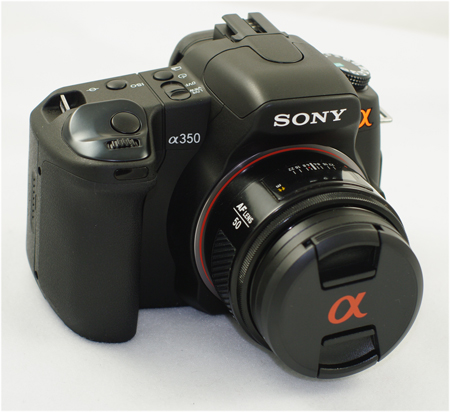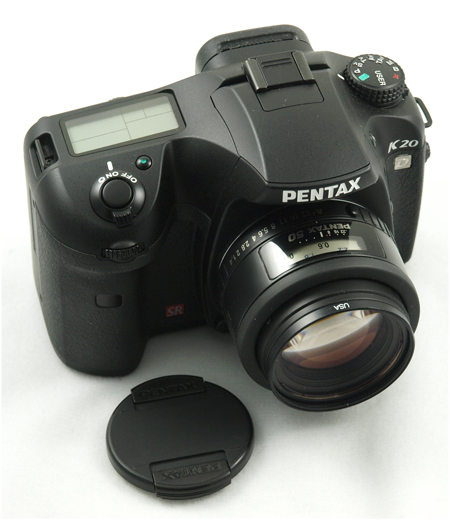Sony A350: Full-Time Live View at 14.2MP
by Wesley Fink on April 3, 2008 3:00 AM EST- Posted in
- Digital Camera
Resolution, Sensitivity and Image Quality
Sony likely wanted to scoop the industry with the 14.2MP resolution of the entry A350. That plan probably got scrapped by the 14.6MP Samsung CMOS sensor used in the prosumer Pentax K20D. While the A350 doesn't gain bragging rights as the highest res sensor south of $8000 it is still mighty close at 14.2MP. It is also the highest resolution sensor to be found in any current or announced entry-level DSLR.
Pentax went to great lengths to emphasize the greater size of their photoreceptor sites that made sensitivity more akin to the Sony/Nikon 12MP sensor. Pentax also emphasized the expanded sensitivity of their 14.6MP sensor with ISO options to 6400. Sony makes no special claims for the 14.2MP sensor in the A350, but the new sensor still has the option of ISOs to 3200.
We've already discussed how the A350 is easy to use with the best Live View you can find in a DSLR these days. The big remaining question, then, is whether the 14.2MP sensor really makes any difference in image quality.

To answer that question we considered that the most revealing test of sensitivity, noise, and resolution is low tungsten light typical of home interiors. The selected scene was not chosen to be pretty but to be revealing of sensitivity, noise, and image quality. It is a shot of my office stacked with motherboards and other review equipment taken with a standard 50mm f1.4 lens.

We found the APS-C 14.6MP CMOS sensor in the Pentax K20D to be excellent in sensitivity with well-controlled noise. The sensor size and resolution is roughly comparable to the A350, but the camera is much more expensive, uses a CMOS sensor rather than CCD, and it is targeted at the prosumer rather than entry-level. For those reasons, we included the Pentax K20D in these comparison tests.

The Canon 5D is justifiably famous for its incredible resolution with the full-frame 12.2MP CMOS sensor. The larger size sensor creates larger photo sites and the larger pixels are more sensitive to light than smaller APS-C sensors. The larger sensor size means the pixel size is more like an 8MP APS-C than a 12.2MP sensor. That makes for a good comparison to these two 14+MP sensors.
All images used a 50mm f1.4 lens (Pentax 50mm f1.4, Sony/Minolta 50mm f1.4, Canon Ultrasonic 50mm f1.4). Aperture Priority was used with a fixed aperture of f4 at all ISOs on all three cameras. Shots were taken using a tripod and remote shutter release to prevent shake. High ISO Noise Reduction used the lowest level of high ISO NR that could be selected in each camera. White Balance was manually set to Tungsten on each camera and the only light source is a 100W tungsten bulb. These harsh test conditions should make image noise as severe as you will likely see in each camera short of time-exposure darkness. Images were captured in JPEG format so they could be displayed and downloaded without the requirement for post-processing software.










113 Comments
View All Comments
dug777 - Monday, March 31, 2008 - link
I would also simply suggest using a time-delay shot if you don't have a wireless or wired shutter release :)dug777 - Monday, March 31, 2008 - link
That or they're out of focus?Heidfirst - Monday, March 31, 2008 - link
Interesting review as usual with a more general consumer orientated view as compared to some of the more "specialist" DSLR sites, thank you.A vies notes, if I may:
"For those who wish to buy the body alone, only the A350 ($799) and A700 ($1399) are available without a kit lens"
I realise that Anandtech is USA-centric but also does get significant traffic from other countries - this varies from country to country according to local Sony marketing decisions e.g. if I want to buy an A200 body only in the UK that's not a problem.
Often the street (as opposed to msrp) prices for the basic kit 18-70mm package are so little more than body only though that you may as well get the 18-70 too.
"The layout and pattern is the same as the A200, A300, and earlier A100 suggesting it is the same AF module. The AF speeds on all models also support the conclusion that this is likely the same venerable AF module used in previous Minolta and Sony digital SLRs. "
Sony claim 1.7x faster focussing (probably largely as a result of using a more powerful motor but also a tweaked system).
Probably little has changed because the basic Minolta metering & AF system going back 20 years or so has been a very good base & only required minimal tweaks/upgrades.
Re. the battery:
If you compare Sony NP-FM500H prices it's similar to those for the official Canon, Nikon, Pentax etc. batteries so the issue isn't really the pricing of the official batteries but the unavailability of generic copies.
When I bought my A700 I also bought a spare battery but I've never actually had to use it as battery life has been very good. Extensive Live View use on an A300/A350 may use more I would imagine though.
At least Sony now have a standard battery throughout their DSLR range whereas on Canon & Nikon as you upgrade bodies you change batteries so you can't carry them over but must buy new.